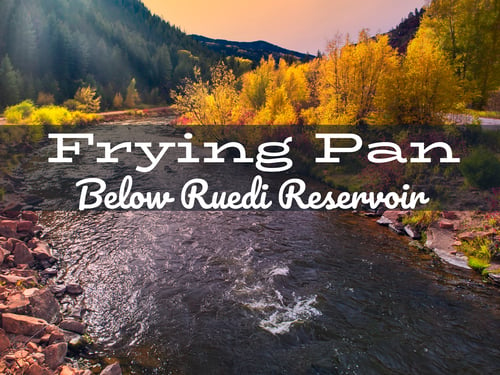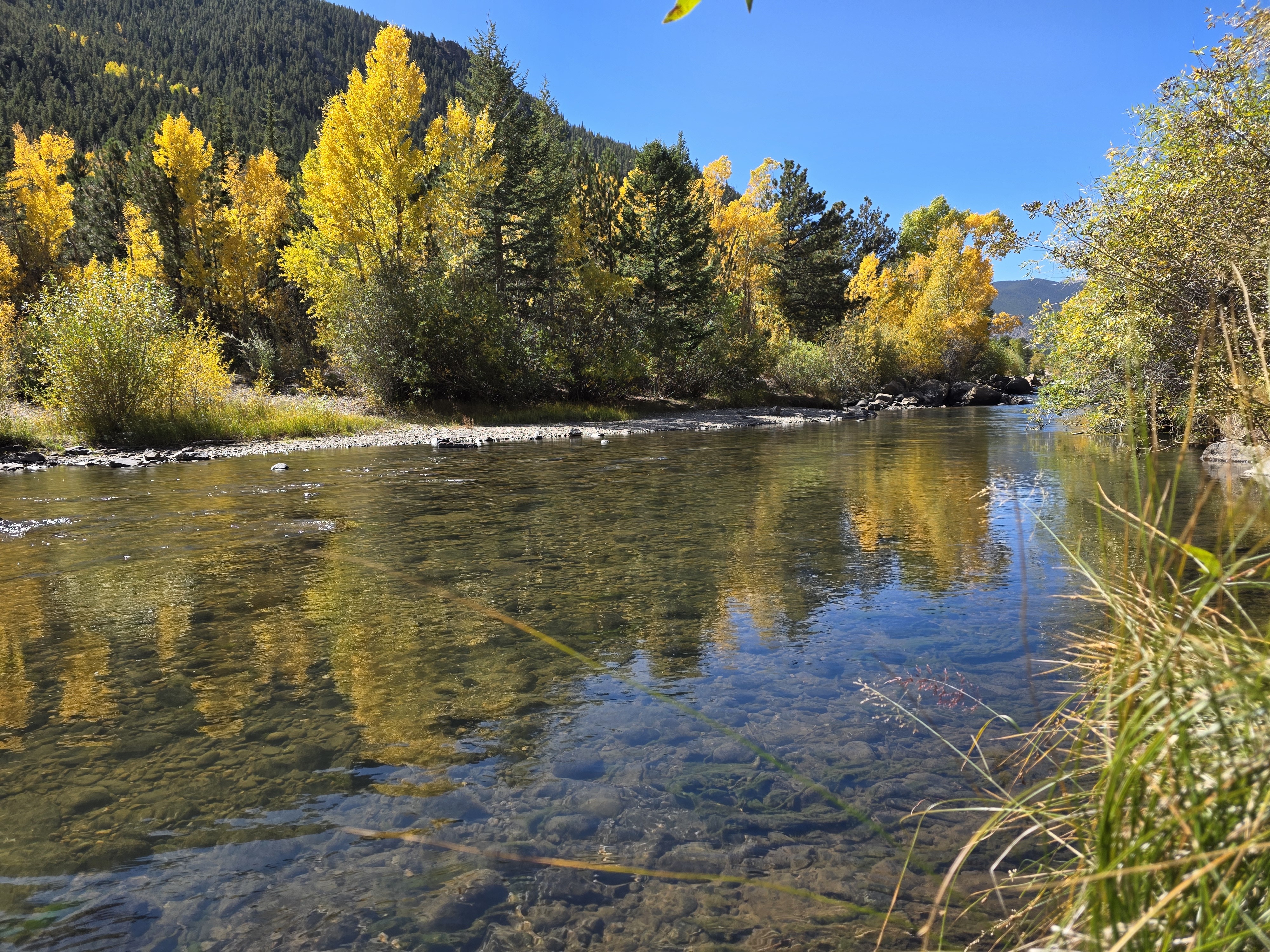Listen to the Audio Overview
When freestones freeze, tailwaters come alive.
That’s the secret every winter angler learns the hard way.
Three rivers hold the line through Colorado’s cold season.
Each stays open, steady, and full of trout willing to eat—if you speak their language.
Welcome to the Triangle.
Three rivers. Three personalities. One map for winter success.
Why Tailwaters Own the Winter
Predictability.
Even when it’s twenty degrees out, dam-fed flows stay steady.
That means consistent temperature, stable bug life, and trout that don’t shut down.
Think of them as the winter feeders that never stop.
Tailwater advantages:
- Reliable midges and BWOs year-round
- Water temps hovering near 40 °F
- Concentrated fish populations
- Easier access when everything else is locked up
The Triangle Rivers
1. The Fryingpan — The Technician’s Playground

You’ll never out-muscle this river.
The Fryingpan demands accuracy, stealth, and small flies. Flows hover between 40 and 60 cfs below Ruedi Dam, so every ripple counts.
Best for: anglers who enjoy solving puzzles one drift at a time.
Winter Strengths:
- Sight fishing to large trout in glass-clear water
- Reliable mid-day midge hatches
- Deep pools loaded with browns and rainbows
Pro Insight:
“If your drift’s off by an inch, you’re wrong by a mile.”
Choose the Fryingpan when:
You want to test yourself. You want to fish slow and think slower.
2. The Blue River — The Big-Fish Curveball

The Blue isn’t subtle. It’s power water: mysis shrimp, deep slots, and trout that could break a light tippet with a single turn. Flow stays steady, the water stays clear, and the fish stay heavy.
Best for: anglers who prefer fewer fish but bigger rewards.
Winter Strengths:
- Mysis shrimp buffet below the dam
- Structure-driven deep runs
- Year-round trophy potential
Guide Callout:
“If you’re not bumping bottom, you’re not even close.”
Choose the Blue when:
You want weight on the line and the chance at a personal best.
3. The Big Thompson — The Everyday Classic

Easy access, steady flows, and reliable midges make the Big T the friendliest of the three.
It’s the perfect quick-hit fishery for Front Range anglers who don’t want to overthink it.
Best for: anglers chasing steady action and forgiving water.
Winter Strengths:
- Short drive from Denver or Loveland
- Predictable holding lanes
- Productive from late morning through mid-afternoon
Local Wisdom:
“If you want to fish instead of troubleshoot, go to the T.”
Choose the Big Thompson when:
You want a half-day escape and a good shot at success.
How to Choose Your Winter River
| Your Priority | Go Here | Why |
|---|---|---|
| Trophy potential | Blue River | Deep, cold, big-fish water |
| Technical challenge | Fryingpan River | Precision and tiny bugs |
| Easy access and consistency | Big Thompson | Close, stable, forgiving |
| Warmest microclimate | Fryingpan or Big T | Sheltered canyons |
| Limited time | Big T | Quick drive, quick payoff |
The All-Triangle Fly Box
Forget hauling three boxes.
A single sleeve with these patterns will fish all winter:
Midges and Baetis (sizes 18–24):
Black Beauty, Top Secret Midge, RS2, WD-40, JuJu Baetis
Support patterns:
Eggs, Scuds, Mini Leeches, Thin Mint Buggers, Pheasant Tails
Pro Hack:
“Start small, then smaller. If you think #20 is tiny, tie on a #24.”
Guide Notes from the Triangle
🟫 Fryingpan Rule: Slow down. Then slow down again.
🟦 Blue Rule: Add weight until you hang once every few drifts.
🟩 Big T Rule: Keep moving until you find fish—then stay put.
Mindset for the Winter Angler
Winter tailwater fishing isn’t about numbers.
It’s about precision, patience, and the quiet kind of satisfaction that comes when your indicator barely twitches and a 20-inch rainbow rolls in slow motion.
The Triangle isn’t a route. It’s a rhythm.
Learn it, and you’ll fish Colorado all winter long.
.png?width=300&height=100&name=Copy%20of%20Rise%20Beyond%20Logo%2012.31.24%20(300%20x%20100%20px).png)
.png)

